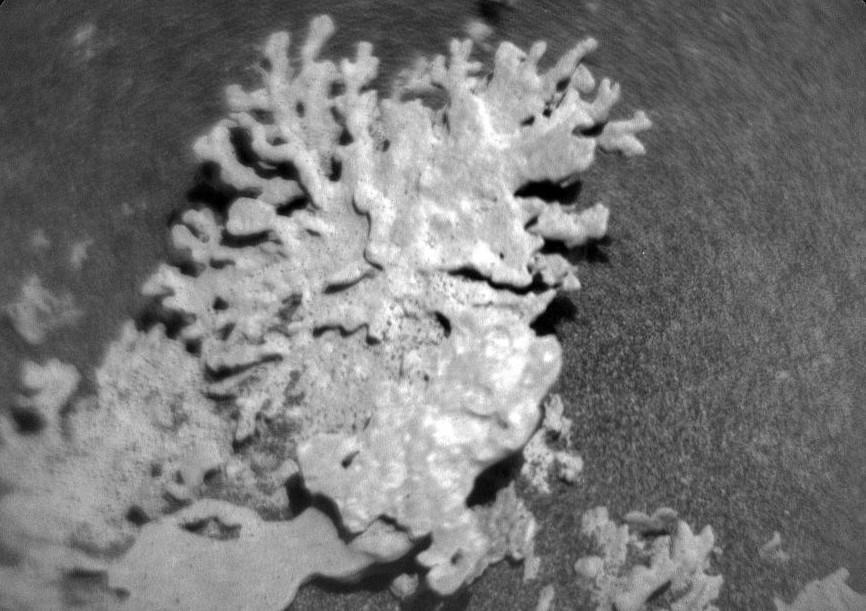
Coral-shaped rock spotted on Mars, NASA shares pic
NASA’s Curiosity Mars rover has made another groundbreaking discovery on the Martian surface. The rover, which has been exploring the planet since 2012, recently sent back black and white images of a rock that bears an uncanny resemblance to a piece of coral. The fascinating find has left scientists and space enthusiasts alike wondering about the geological history of the Red Planet.
The rock in question was discovered in the Gale Crater, a large impact basin on Mars. According to NASA, the recently discovered coral-like rock is believed to be a billion years old. This is a significant find, as it provides valuable insights into the geological evolution of Mars and the potential for life on the planet.
The Curiosity rover, which is equipped with a suite of scientific instruments, has been exploring the Martian surface since its landing in August 2012. The rover’s mission is to determine if Mars was ever capable of supporting life, and to characterize the planet’s geology and climate.
The coral-shaped rock was discovered using the rover’s ChemCam instrument, which is a laser-induced breakdown spectroscopy (LIBS) system. ChemCam uses a high-powered laser to vaporize the surface of the rock, and then analyzes the resulting plasma to determine the chemical composition of the rock.
The black and white images of the rock, which were released by NASA, show a clearly defined coral-like shape with a smooth, rounded surface. The rock is about 3.5 centimeters (1.4 inches) in diameter, and is composed of a type of mineral called calcium sulfate.
While the discovery of a coral-shaped rock on Mars may seem unusual, it is not the first time that scientists have discovered rocks on the planet that have a similar shape. In 2015, NASA’s Curiosity rover discovered a rock on Mars that had a similar shape, but was much larger than the recently discovered coral-like rock.
The discovery of the coral-shaped rock on Mars is significant because it provides further evidence of the geological activity that occurred on the planet in the past. The rock’s composition and shape suggest that it was formed as a result of the interaction between water and rock, which is a key ingredient for life.
The discovery of the coral-shaped rock is also significant because it provides further evidence that Mars was once capable of supporting life. The rock’s composition and shape suggest that it was formed as a result of the interaction between water and rock, which is a key ingredient for life.
In conclusion, the discovery of the coral-shaped rock on Mars is a significant find that provides further evidence of the geological activity that occurred on the planet in the past. The rock’s composition and shape suggest that it was formed as a result of the interaction between water and rock, which is a key ingredient for life.
Source:
https://www.jpl.nasa.gov/images/pia26634-curiositys-chemcam-views-a-rock-shaped-like-coral/






